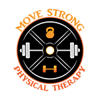Ways to Train Lower Body with Knee Pain
Knee pain is one of the most common complaints among people who exercise. Whether it be running or Crossfit or any other exercise endeavor, knee pain can be frustrating and cause people to either try to push through the pain or stop doing anything all together.
The key with knee pain is to train intelligently and still gain a training effect without making things worse.
DISCLAIMER: If any of the suggestions in this article make symptoms worse/not improve, stop! Speak with a licensed medical practitioner to get to the root cause of the problem.
With that being said, retraining and improving movement quality is important. There will eventually come a point where training with some discomfort is needed to improve the resiliency of the tissues. Make sure to consult with a medical professional who understands these concepts in order to return to a high level of function.
Common movements that people with knee pain feel worse with are lunges and squats. Yes, there are other exercises that may bother knee symptoms, but these are the two most common.
Without delving too deep into exercise technique, loading, volume, etc., here are some options that if you are dealing with knee pain, how to still maintain a training effect.
Squat Variations
For squat variations, if the typical back squat bothers your knees, try performing these variations.
Front Squat
The front squat can be a great option as it changes the position of the bar from the back of the body to the front. By changing the position, it requires an increased demand by the core musculature to remain upright. Anecdotally, athletes will find an improvement when changing the bar position from the back to the front potentially due to increased core recruitment.
Goblet Squat
The goblet squat is another great variation as well. Similar to the reasons for the front squat, this is usually the option I go to first when someone is rehabbing or trying to return to squatting after knee pain or a knee injury.
Goblet Squat with Pulse
The Goblet Squat with Pulse is another option. This can be a way to incorporate the core musculature into the movement by performing the pulse at the bottom. By performing the pulse, it can help to train the core to stabilize the spine and entire lower body at the bottom portion of the squat.
Goblet Squat with Breath
The Goblet Squat with Breath can help train the body to control the bottom position of the squat as well as focus on maintaining proper technique.
Barbell Squat to a Box
The Barbell Box Squat is another option to place a great emphasis on the posterior chain ie. glutes and hamstrings. Barbell squats, whether they be back or front, can sometimes bother athlete’s knees. By performing them to a box, it can minimize anterior translation of the tibia and can decrease strain on the knees while still maintaining a training effect.
Goblet Squat to a Box
The Goblet Box Squat is similar to the Barbell Box Squat as shown above except that the load is more anterior and can be more of a challenge to the core musculature.
Posterior Chain Variations
Hip dominant movements are typically much more tolerable for athletes and clients with knee pain. That is not to say that all hip dominant movements are pain-free for all athletes, but here are many variations to train the posterior chain while minimizing symptoms at the knee.
Glute Ham Raise
Trap Bar Deadlift
When athletes perform trap bar deadlifts, some can experience knee symptoms. The trap bar deadlift uses more quad activation than a conventional or sumo deadlift. When performing, focus on hip hinging and “pushing the hips back” to promote more hamstring and glute activation vs just flexing through the knees to reach the bar.
Sumo/Conventional Deadlifts
Cable Pull Throughs
Lunge Variations
Lunges can occasionally be painful for someone trying to train around knee pain. It can vary from athlete to athlete in that some have pain with forward lunges while others have pain with reverse lunges.
For forward lunges, try minimizing the amount of anterior tibial translation initially to allow you to train pain-free. If you find that your knee travels forward and this increases your symptoms, try lunging towards a bench or other similar object.
This next video is of a split squat, but the same principles can apply. Try incorporating a slight forward lean as this can decrease strain on the joints of the lower body and delegate the stress to the muscles of the lower body.
For reverse lunges, also try minimizing anterior translation initially if having knee pain. Utilizing a bench or hurdle as shown before can help.
As shown before with the forward lunges, incorporating a slight forward lean is another option for reverse lunges as well.
Another option that works for some is incorporating slow eccentrics into your lunges. By incorporating slow eccentrics, it allows your body to control the movement better and decreases the amount of threat to the nervous system and can improve pain symptoms.
If you are dealing with knee pain, there are still many options to utilize in the gym in order to get a training effect. Try some of these options if you are dealing with knee pain.



